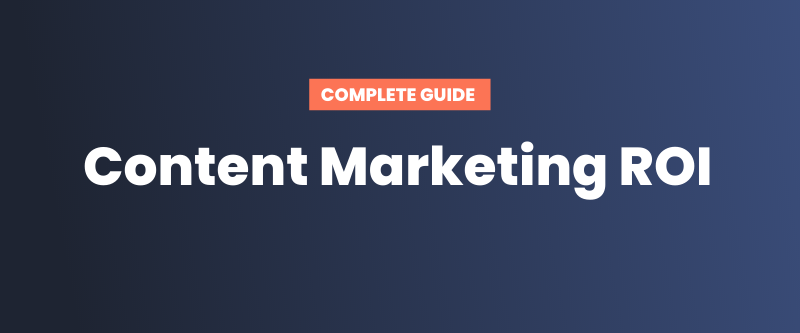You know content marketing is important. You know you should do it, but what exactly is your business getting out of it? People can tell you all about content marketing and how to go about doing it, but few get around to describing the return on investment. That’s what content marketing is…an investment.
When you create quality content and distribute it according to a well-developed marketing plan, you will get a return depending on your goals. Ultimately, the overall goal is to improve your bottom line and we’ll tell you how content marketing gets you there.
Build Trust In Your Brand
One of the most sought-after audiences are the millennial. The 18-25-year-olds that, according to Newscred.com, will account for more than $1.4 trillion in spending power by 2020. They’ve grown up in the era of Facebook and Google and many have lost faith in the brands they used most of their lives.
Why? They’re inundated with more than 5,000 branding messages every day from ads to blogs. They’re more aware of the bologna that many brands pass off as content. They see through thinly veiled sales pitches and long for content that connects with them on an emotional level. Content needs to be funny, inspiring or educational for them to absorb and share it with friends.
When you build an emotional connection, you build trust. Too many brands abandoned the emotional connection in exchange for content designed to sell. Sales will come, but first, you need to build trust.
Newscred also found that 70 percent of millennials share content because it makes them laugh. Did your last blog post contain any humor? Did it inspire? Was it boring?
How can humor and trust lead to sales? Denny’s is a prime example where humor can bring about an amazing return. The company worked with website College Humor to create a web series where comedian David Koechner sat in a Denny’s and chatted with some of his comedian friends including Jason Bateman, Will Arnett, Chris Pratt and more. The videos led to an impression score increase from 6.2 to 25.4 for 18-34 year-olds. We’re pretty sure that sold a few extra Baconators.
Shareability Leads To Conversions
What makes an article or other piece of content shareable? We talked about how content marketing can build trust in your brand, but a big aspect of that is making content that people want to share.
According to Newscred.com, millennials share content that is funny, thought-provoking, from a cause they believe in and connects with their circle of friends.
When you look at your Facebook feed, what are people sharing? They’re sharing funny videos and news items that are important to them. When you’re creating and building your content, keep the audience you want in mind. You need to be specific. It’s not just about targeting males ages 18-35. It’s about targeting males that live in New York between the ages of 18-35 that shop at Kohl’s and enjoy Bruno Mars. You need to know what they want, what they care about. People are bombarded with information and they don’t have time to read everything. They take 10 seconds to look at information and move on to the next. If you want to grab their attention, then you need to create content they want to read.
What happens when you do this? According to Newscred.com, 64 percent of millennials respond to useful content, but 30 percent refuse to even read content that doesn’t entertain or educate them. Let’s take a look at Netflix’s content marketing campaign around “Orange is the New Black” Netflix went all out when the new season of the show premiered. They hosted a Twitter chat, created their own hashtag and developed a mobile app with a ton of shareable content. That translated to 98,407 social mentions in one week with 98 percent positive.
Optimize Product/ Categories for E-Commerce Sites
When it comes to content marketing, many e-commerce sites feel like they’re being left behind. They have hundreds or even thousands of pages of products and category information but lack the pages of many informational sites. They might have a basic blog but lack the bells and whistles.
Content is far more than blog posts and long-form content. It’s product descriptions, review widgets and plugins, schema markup and anything else that connects with customers. By decking out your e-commerce product pages with great content…why can’t product descriptions be funny or educational…and other extras you’re going beyond a simple product description.
Schema markup translates to more expansive and eye-catching search results. People consider reviews like recommendations from friends. Having reviews on your page lets them know others trust your products. In fact, according to Digital Commerce 360.com, when companies go from 0 to 1 review, sales can go up by 10 percent.
It even extends to live chats where your employees can answer questions from customers. All these add up higher conversion rates. If you have a blog…and everyone should…use it to add buzz to your products. Show some behind the scenes pictures and how your business runs.
If you have a new product coming out soon, then preview it on the blog or show them how your products can let them do something expensive for less. For example, perhaps a celebrity caused a specific trend of dress to be a hot commodity. If you sell something similar, let people know that they can get if for less than the designer alternative. Make sure to include a link to the featured product in the blog.
Higher Quality Traffic Means Higher Conversions
If you want higher revenues, then higher traffic to your website is a given. When it comes to content marketing, that means you need to give people a reason to come to your website. Creating shareable content ultimately bring people back to your website even if they’ve never been there before.
According to Newscred.com, UK grocery store chain Waitrose has an extensive video collection featuring recipe videos and live streams of farms they get their food from. It’s incredibly popular and a destination for customers who want to learn more about various recipes and how foods go from farm to table. Their videos are informative and educational, making them a draw for new and existing customers.
Another aspect of increasing traffic through content marketing is keyword optimization. While content shouldn’t be created just for SEO purposes, that doesn’t mean they can’t naturally be optimized for search engines. Good content naturally contains keywords, but you can make better use of that through better keyword research.
Discovering a keyword you’ve focused on has a low volume, but a similar keyword has a high volume may make a difference on your word choice. When you have popular content that features good keyword selection, then it helps your search engine rankings. The higher the rankings, the more people click on your site. While higher traffic doesn’t necessarily mean higher conversions, if you choose your keywords and topics based on a specific audience versus than the general public, then you’re more likely to see those conversions.
Backlinks are another way to improve your search results, but they are notoriously hard to get. In the past, people would buy backlinks or spend hours contacting websites to include a backlink on a webpage. Google put the brakes on buying links and contacting websites often didn’t work.
Good content that people share naturally creates backlinks. The more quality content you produce the more of an expert in your field people perceive you to be. They may link to your site in their own blog posts or it can go viral on social media. The more powerful backlinks you have the better your ranking on Google and the more traffic comes to your site.
Use Native Ads, But Be Clear
People hardly see banner ads anymore and they skip right over text ads with abandon. It can be difficult to get a good ROI on display ads because people are so used to them. Native advertising is a way to provide a content rich article that you can guarantee placement because you paid for it.
People are less likely to simply skip over an article even if they know it’s an ad. This form of advertising works, according to Newscred.com. The company pays for native advertising on Linked In and get an ROI of $17 for every $1 spent. When was the last time you saw a return like that on your AdWords?
The key to native advertising is not to be deceptive. Today’s audience is savvy to online marketing and if they think you’re trying to trick them your native ad will turn them off from your brand. That’s why it’s important to clearly label in several spots that the article is an ad or sponsored. According to Forbes, people are 25 percent more likely to look at a native ad than a banner.
Native advertising is a form of advertising, but it’s also content marketing. You’re paying for guaranteed placement onto a newspaper, magazine or website. The content still has to be fresh and engaging, but you don’t have to worry about it being changed by the media or the difficulty of organically getting it placed and shared.
Experimentation Can Lead To Conversions
People don’t like working outside their comfort zone, but when it comes to content marketing experimentation can create conversions. You wouldn’t think twice about A/B testing your AdWords ads because you know a slight change can mean a big difference. It’s the same way with content marketing.
Changing up the type of content, headlines and keywords can have a dramatic impact on your bottom line. A more dramatic headline that catches the reader’s eye can create a click. Writing a How-to instead of a listicle could lead to higher traffic.
A/B testing can improve your conversions by more than a percentage point. Try out different call to actions, landing pages, etc. Split testing is used throughout digital marketing and should be a tool for content marketing. If changing up a call to action or a headline leads to a single percentage point, then it’s worth it.
Be Prepared For The Long Game
Content marketing isn’t a quick hit type of marketing. While you might see some immediate success thanks to social media sharing, the real success happens over time. According to Digital Commerce 360.com, sites that prioritize blog posts are 13 times more likely to get a positive ROI. Why? Blogs are forever.
When you consistently and regularly blog, you’re building a library. The information will likely be just as relevant a year from now or two years from now as the day you first posted. You may only get 100 views of your blog post on the first week of it’s posting, but over two years it could be thousands of views. You can even extend it out five or 10 years and see tens of thousands of views. This is why blogs are one of the most effective marketing methods. It has no time limits. There is no 6-month or 1-year campaign.
It’s not just views either. A blog post can get backlinks over time as well. You can get a lot of mileage out of a single blog post, but imagine what you can get out a dozen blogs or a few hundred?
Content marketing at its heart is a long game. Your efforts can focus on getting as much coverage and shareability on the short term, but the real ROI comes over time.





